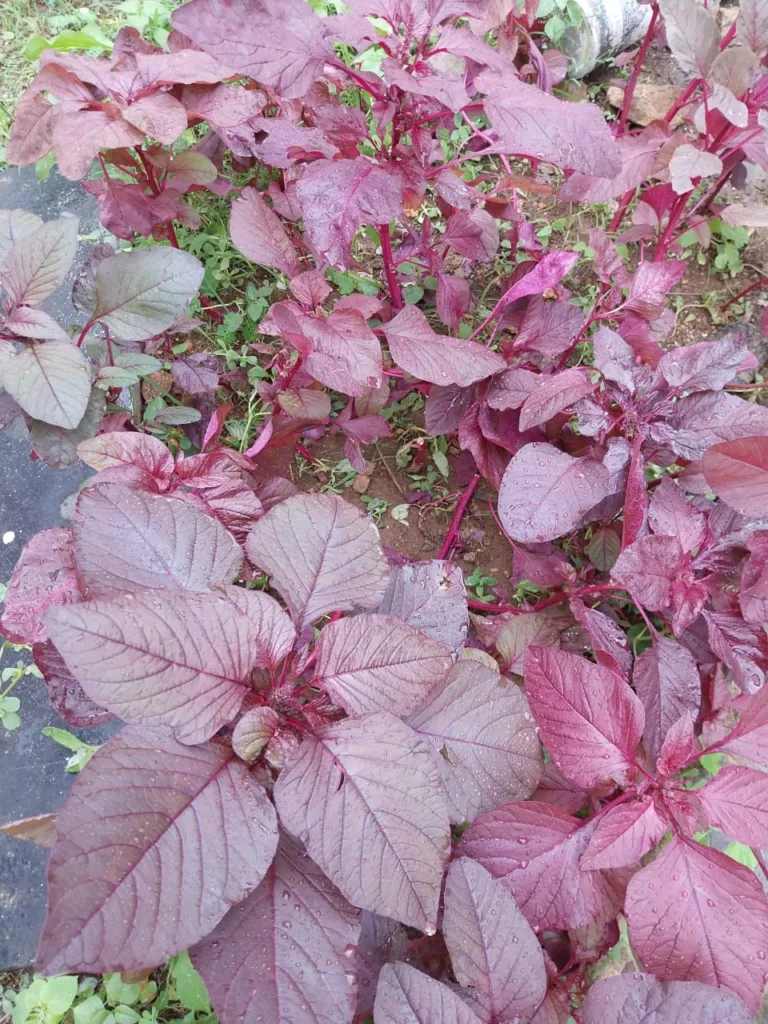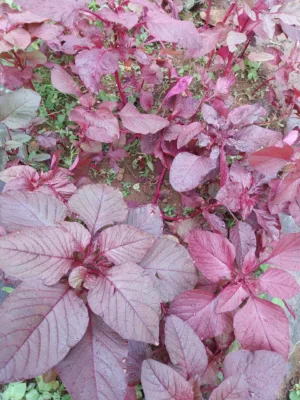

Images from my Garden
Table of Contents
Amaranth Leaves - Rich Nutrients, High Fibre, Heart Health
Origin
Origin
Amaranth, available in both red and green varieties, is a versatile and highly nutritious leafy vegetable with a long history of consumption worldwide. There are roughly 40 types of Amaranth. The colors might vary according to the climate of the region where it is cultivated, red is better than green. These vibrant leaves offer a rich assortment of essential nutrients, making them a valuable addition to a healthy diet.
Both red and green varieties is believed to have originated in the Americas, particularly in Central and South America. It has a long history of cultivation by indigenous peoples in these regions, with evidence of amaranth consumption dating back thousands of years.
The ancient Aztec civilization in Mexico is known to have cultivated and consumed extensively. They referred to it as “huautli”( the smallest giver of life) and used it not only as a dietary staple but also in various religious ceremonies. Amaranth played a significant role in Aztec culture. Though it is 8000 years old and it was used as seed to devore as per Google.
Following the arrival of Europeans in the Americas, amaranth cultivation and consumption declined due to colonial restrictions and the promotion of European crops. However, amaranth persisted in some regions and continued to be cultivated and used in traditional dishes.
In recent years, it has gained popularity worldwide as a nutritious and versatile leafy vegetable and grain. It is now cultivated in various parts of the world, including Asia, Africa, and the United States, where it is valued for its nutritional content and culinary versatility. Both red and green varieties can be found in different parts of the world, offering unique flavors and textures to a variety of dishes.
Nutrients
Nutrient Profile:
Vitamins: Both red and green amaranth are abundant in vitamins, particularly vitamin A, which supports vision and immune health. They also contain vitamin C, a potent antioxidant that helps protect cells and promote skin health.
Minerals: These leafy greens are a good source of essential minerals. They provide calcium for strong bones, iron for oxygen transport in the body, and potassium for maintaining healthy blood pressure.
Fiber: Leaves are rich in dietary fiber, aiding in digestion and contributing to a feeling of fullness, which can assist in weight management.
Antioxidants: Both red and green contain various antioxidants, including flavonoids and carotenoids, which help combat oxidative stress and reduce the risk of chronic diseases.
Protein: Leafy red/greens offer a moderate amount of protein, making them an attractive option for vegetarians and vegans looking to meet their protein needs.
Benefits
Health Benefits
Amaranth leaves, often overshadowed by their grain counterpart, are a nutritional treasure trove in their own right. These vibrant green leaves offer a wide array of health benefits, and one of their notable strengths lies in their rich content of B vitamins.
Bone Health: The calcium content in leaves supports strong and healthy bones.”Heart Health” High levels of potassium and fiber promote heart health by helping to regulate blood pressure and reduce the risk of cardiovascular disease.
Heart Health: High levels of potassium and fiber promote heart health by helping to regulate blood pressure and reduce the risk of cardiovascular disease. It is very good for a diabetic person, as it is rich in fibre it helps in decreasing sugar absorption into the bloodstream it will help to regulate sugar in your blood. If you want quick results chop the leaves into small bits mix them with your food and gobble it.
Digestive Health: It has fiber content supports digestive regularity and can alleviate constipation.
Immune Support: Abundant vitamin C enhances the immune system’s function and aids in warding off illnesses.
Antioxidant Protection: The antioxidants in red and green amaranth protect cells from damage and may reduce the risk of chronic diseases.
Weight Management: The fiber in these leafy greens contributes to a sense of fullness and can help with weight management.
Eye Health: It is rich in beta-carotene (a precursor to vitamin A), which is vital for eye health and vision.
Iron Intake: It provides a source of iron, which is essential for preventing iron-deficiency anemia.
Pregnancy Nutrition: B Vitamins Galore:
Amaranth leaves are replete with vitamins from the B group, including folates, riboflavin (B2), niacin (B3), thiamin (B1), vitamin B6, and others. These essential B vitamins play a crucial role in maintaining overall health and well-being.The folate content in amaranth is important for fetal development during pregnancy. Folates, in particular, found abundantly in amaranth leaves, are of paramount importance during pregnancy. Adequate folate intake is essential for preventing neural tube defects in newborn babies, ensuring the healthy development of the baby’s brain and spinal cord. Expectant mothers are often advised to incorporate folate-rich foods like amaranth leaves into their diets to support the optimal growth and formation of the baby’s neural tube.
Mental and Physical Health:
Beyond their role in birth defect prevention, B vitamins are indispensable for various aspects of mental and physical health. They are involved in energy production, aiding in the conversion of food into energy that our bodies can use. Additionally, these vitamins are vital for the functioning of the nervous system, helping to support cognitive function and emotional well-being.
Inflammation Reduction: Some components of amaranth may help reduce inflammation in the body, potentially benefitting overall health.
Incorporating amaranth leaves into your diet is not only a delicious culinary choice but also a nutritious one. Whether you enjoy them in salads, sautés, or other dishes, these leafy greens offer a valuable dose of B vitamins, contributing to your overall health and vitality. So, savor the goodness of amaranth leaves and reap the benefits they provide for both body and mind.
Incorporating red and green amaranth into your diet offers a delightful way to enjoy a variety of nutrients while exploring diverse culinary possibilities. As with any dietary changes, it’s advisable to consume them as part of a balanced diet and consult with a healthcare professional for personalized dietary recommendations, particularly if you have specific health concerns or conditions.

Comparision the nutrient profiles of red amaranth (Amaranthus cruentus) and green amaranth (Amaranthus viridis):
Let’s compare the nutrient profiles of red amaranth (Amaranthus cruentus) and green amaranth (Amaranthus viridis):
Vitamins: Both red and green are rich in vitamins, particularly vitamin A and vitamin C. These vitamins play important roles in maintaining healthy vision, skin, and immune function.
Minerals: Both varieties are good sources of minerals such as calcium, iron, and magnesium. Calcium is essential for bone health, iron is important for oxygen transport in the blood, and magnesium is involved in hundreds of biochemical reactions in the body.
Protein: It is considered a high-protein grain, and both red and green varieties contain significant amounts of protein. Protein is essential for building and repairing tissues, as well as for various metabolic processes in the body.
Fiber: Amaranth, including both red and green varieties, is a good source of dietary fiber.
Antioxidants: Both red and green contain antioxidants such as flavonoids and phenolic compounds. Antioxidants help neutralize harmful free radicals in the body and may reduce the risk of chronic diseases such as heart disease and cancer.
Fats: It contains small amounts of healthy fats, including omega-3 and omega-6 fatty acids. These fats are important for brain health, heart health, and overall cellular function.
While the specific nutrient content may vary slightly between red and green amaranth, both varieties are highly nutritious and can be valuable additions to a balanced diet. Incorporating a variety of colorful fruits and vegetables, including different types of amaranth, can help ensure a diverse intake of essential nutrients.
